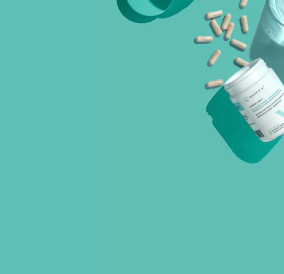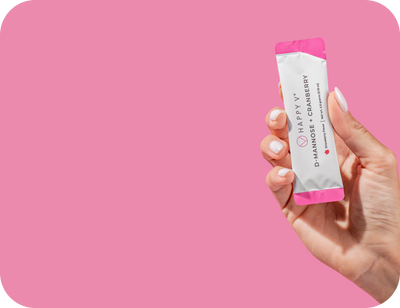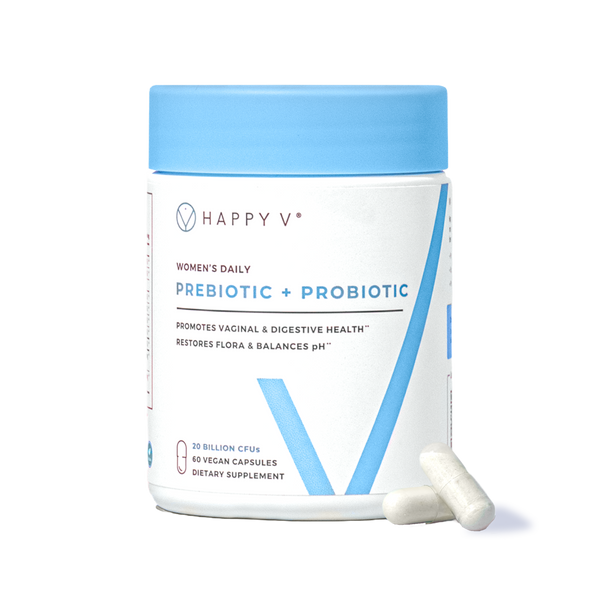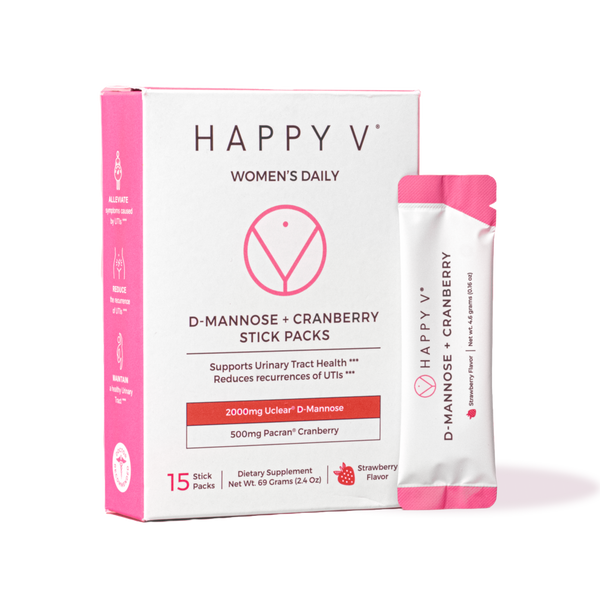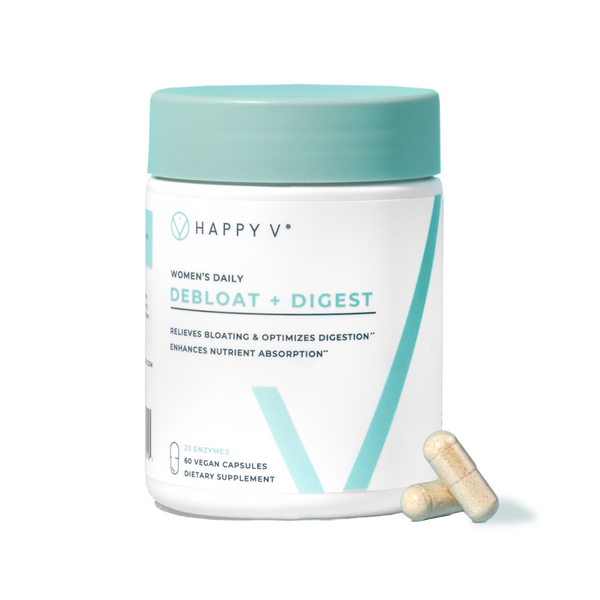- Fact Checked
- September 27, 2025
- 13 min read
Lactobacillus Iners: Vaginal Health Ally or Sneaky Frenemy?
Table of Contents
Table of Contents
When it comes to vaginal health, you are likely familiar with the “good bacteria” Lactobacillus. Lactobacillus species help maintain a low vaginal pH, protect against infections, and keep things in balance1. Well, most do, anyway.
Lactobacillus iners (L. iners) is the exception. It’s incredibly common, especially in the vaginal microbiome of reproductive-age women2, but it's more of a shape-shifter than a superhero. It tends to show up during times of change, like after your period, after antibiotics, or when you're recovering from an infection. And unlike other Lactobacillus species, it doesn’t always help your body fight back.
So what does that mean for your vaginal health? And what should you do if L. iners is running the show?
This post is for informational purposes only and does not constitute medical advice. See full disclaimer below.
What Is Lactobacillus iners?
L. iners is one of the four main types of gram-positive Lactobacillus species found in the vagina, alongside L. crispatus, L. gasseri, and L. jensenii. But unlike the other three, L. iners doesn’t consistently protect against infections3. In fact, it’s often found during bacterial vaginosis (BV), yeast infections, urinary tract infections (UTIs), and other microbial disruptions, including sexually transmitted infections (STIs) and other infectious diseases4.
L. iners is the most prevalent and adaptable Lactobacillus species in the vaginal microbiome. It thrives especially during times of change, like after menstruation, sex, or antibiotic use. That makes it a context-dependent species, neither strictly protective nor harmful, but often dominant when your vaginal microbiota is in flux.
Here’s what sets L. iners apart:
It’s A Survivor, Not a Fighter
Lactobacillus iners produces lactic acid5, which helps keep vaginal pH slightly acidic—a good thing for vaginal health. But unlike other vaginal Lactobacillus species, L. iners doesn’t make hydrogen peroxide (H₂O₂), a powerful antimicrobial compound that helps fight off harmful bacteria6.
Because of this, L. iners tends to survive during disruptions—like after antibiotics7, your period, or sex—when other, more protective Lactobacillus species are wiped out. That makes it resilient, but also means it may hang around alongside anaerobic microbes (the kind that cause infections).
It Can Inhibit Harmful Bacteria, But Only Sometimes
In vitro studies (aka lab tests), L. iners has been shown to inhibit BV-related bacteria like Gardnerella vaginalis and Fannyhessae vaginae. This suggests it may help defend the vaginal microbiome, especially during or shortly after treatment with antibiotics like metronidazole.
But that protection doesn't always last. L. iners often helps in the short term but gets outcompeted over time by stronger bacteria like L. crispatus8, which provide longer-lasting protection. So while L. iners may be present after successful treatment, it doesn’t always mean the microbiome is fully recovered or protected from future infections9.
It Competes Differently Than Other Lactobacillus Species
Unlike other Lactobacillus species, L. iners relies on a nutrient called cysteine, which is found in vaginal fluid. This makes it uniquely vulnerable to certain inhibitors.
Researchers have discovered that blocking cysteine uptake in lab models can stop L. iners from growing, without harming the highly protective L. crispatus. That opens the door to new treatments that could help stronger, more protective Lactobacillus strains thrive after BV or other vaginal infections.
It’s Hard to Detect
Traditional tests like the Nugent score, which rely on looking at bacteria under a microscope, often miss L. iners. That’s because it has an unusual shape (morphology) and doesn’t look like other Lactobacillus species.
To accurately detect L. iners, clinicians need to use genomic tools, such as:
- 16S rRNA gene sequencing (for a full picture of vaginal microbiota)10
- Species-specific PCR (for pinpointing L. iners directly)
These advanced microbiological methods are much better at identifying L. iners and helping researchers understand how it behaves in reproductive health and vaginal immunology11.
The Connection Between L. iners and Vaginal Infections
While L. iners does not directly cause vaginal infections, there’s a definite link between a vaginal flora dominated by L. iners and infections like bacterial vaginosis, yeast infections, and urinary tract infections, which account for tens of millions of doctor’s visits every year in the USA alone.
Bacterial Vaginosis (BV)
Bacterial vaginosis (BV) is the most common vaginal infection and often a sign that your vaginal microbiome is out of balance (also called dysbiosis)12. It usually happens when there’s a drop in protective Lactobacillus species and a rise in anaerobic bacteria like Gardnerella vaginalis (#1 cause of BV)13.
Interestingly, Lactobacillus iners often sticks around—or even takes over—during BV.
Why does this happen?
- L. iners can tolerate imbalance, but it isn’t great at fixing it.
- It doesn’t produce hydrogen peroxide (H₂O₂), which means it’s not very good at fighting harmful bacteria.
- It’s often linked with BV recurrence because it doesn’t restore a healthy microbiome the way L. crispatus does14.
That said, some studies show that when someone has a higher amount of L. iners before treatment with antibiotics like metronidazole, they may respond better to the medication. This means L. iners might be a useful marker to help predict who will respond well to BV treatment.
Yeast Infections
Candida yeast infections happen more easily when protective vaginal Lactobacillus species are low15. While L. iners does help keep the vaginal environment acidic (thanks to its lactic acid production), it doesn’t have strong antifungal powers.
That’s because L. iners:
- Doesn’t make hydrogen peroxide
- Doesn’t produce special peptides that break up Candida biofilms
This makes L. iners-dominant microbiota more likely to lead to recurrent or symptomatic yeast infections.
By comparison, L. crispatus, L. gasseri, and L. reuteri have been shown in microbiology and immunology research to:
- Block the growth of Candida albicans
- Break apart tough biofilms that protect yeast
- Reduce inflammation in the genital tract
Urinary Tract Infections (UTIs)
There’s a strong connection between your vaginal microbiome and urinary tract health. When L. iners dominates your vaginal microbiota, you are at an increased risk of UTIs, especially recurring ones.
Here’s why:
- L. iners doesn’t provide strong antimicrobial defense in the vaginal–urinary zone
- It doesn’t produce H₂O₂ or bacteriocins (natural antimicrobial substances)
- It may not stop harmful bacteria like E. coli from moving into the urinary tract—especially if L. crispatus and other protective species are missing
This makes L. iners a weak defender when it comes to UTI prevention.
Why L. iners Is Often Missed in Tests
Despite being one of the most common microbes in the vaginal microbiota of reproductive-age women, Lactobacillus iners is frequently overlooked or misidentified in standard diagnostic tests. That’s because it breaks the mold—literally and figuratively—when it comes to how vaginal bacteria are typically identified.
Here’s why it’s so tricky to detect and what to know if you want accurate results.
Nugent Score: Good for Some, Not for L. iners
One of the most common ways doctors check for bacterial vaginosis (BV) is with the Nugent score. This test looks at vaginal bacteria under a microscope and sorts them by shape and how they react to a special stain (called a Gram stain)—a process based on phenotypic characteristics.
But here’s the problem: Lactobacillus iners doesn’t look like most other Lactobacillus species. It’s smaller and has a shape that can easily be confused with non-beneficial bacteria.
Because of that:
- L. iners is often missed or misidentified
- The test might say everything is “normal,” even if your vaginal microbiome is off balance
- It can underestimate the presence of helpful (or not-so-helpful) Lactobacillus bacteria
Bottom line: The Nugent score is good for spotting obvious infections, but it’s not detailed enough to pick up on L. iners—or to tell the difference between truly protective and weaker lactobacilli16.
Genomic Testing: What Actually Happens in the Lab
The most accurate way to detect L. iners and other vaginal bacteria is through DNA-based testing. This is how it works:
- Sample Collection: A vaginal swab is taken from the upper third of the vaginal wall (where bacteria are most representative).
- Preservation: The sample is frozen or treated to keep the DNA stable.
- DNA Extraction: Scientists isolate the bacterial DNA from the swab.
- Amplification & Sequencing: Special regions of bacterial DNA (like the 16S rRNA gene) are copied and read using machines like Illumina NovaSeq.
- Bioinformatics: The sequences are matched to databases to identify bacteria. A match of 99% or more confirms species like L. iners17.
This type of genomic testing is much more accurate than microscopy. It can clearly identify L. iners, L. crispatus, L. gasseri, and many other species that shape your vaginal health.
Growing L. iners in the Lab: A Scientific Breakthrough
For a long time, researchers couldn’t grow L. iners in lab settings. It was thought to be "unculturable" using normal methods for Lactobacillus.
That’s because L. iners:
- Has a unique genome
- Needs cysteine, that special nutrient not found in standard lab media
Recent breakthroughs solved that. Scientists added cysteine to growth media, which now lets them culture L. iners successfully. This opens the door for studying L. iners strains, testing treatments, and learning how it behaves.
However, culturing is slower and less detailed than DNA sequencing, so it’s mostly used in research labs, not in everyday clinical testing.
Side-by-Side: Genomic vs. Culture-Based Detection
| Method | Can Detect L. iners? | Speed | Detail Level | Used For |
| Nugent Score | Rarely (misses shape) | Fast | Low (morphology) | BV screening in clinics |
| Culture (traditional) | Historically no | Slow | Medium (grows few species) | Research, strain isolation |
| Culture (cysteine-enhanced) | Yes (in labs) | Moderate | Medium–High (experimental) | Lab studies, strain profiling |
| 16S rRNA Sequencing | Yes (high confidence) | Moderate | High (species-level) | Clinical microbiome testing |
| Species-Specific PCR | Yes | Fast | High (targeted) | Research or targeted testing |
Who Should Get Tested for L. iners, and How?
Knowing the dominant bacterial communities in your vagina is not necessarily need-to-know information for every woman, but it can be helpful to get tested for L. iners if you:
- Struggle with recurrent bacterial vaginosis, yeast infections, or UTIs.
- Experience persistent vaginal symptoms (discharge, odor, irritation) but receive normal test results.
- Want a clearer understanding of your vaginal microbiota for preventative care.
- Are planning to start probiotic or therapeutic interventions to support vaginal health.
How to Get Tested
To accurately detect L. iners, you’ll need a molecular vaginal microbiome test that identifies bacteria at the species level. You can get these tests performed in your doctor’s office or using an at-home service.
Here’s what that typically includes:
- A vaginal swab taken from the upper anterior vaginal wall
- Sample storage and shipping with DNA stabilization or deep freezing
- Lab-based PCR or 16S rRNA sequencing to identify species like L. iners, L. crispatus, and Gardnerella vaginalis
- A full report detailing microbial composition, dominance patterns, and clinical implications
Best Practices for Accurate Testing
Whether you’re planning to test your vaginal microbiome in the privacy of your home or work with a provider in their office:
- Choose DNA-based methods like 16S rRNA sequencing or species-specific PCR to detect L. iners.
- Ensure the sample is collected from the upper anterior vaginal wall.
- Confirm that samples are properly preserved (e.g., frozen or stabilized) before processing.
- Look for labs or test providers that offer species-level microbiota characterization, not just broad “good vs. bad” reporting.
What to Do If Your Microbiome Is Dominated by L. iners
Lactobacillus iners plays a bit of a double role in vaginal health. It can be helpful in some situations, but not so great in others. For some people, having lots of L. iners is no big deal. But in others, especially during times of change like after your period, antibiotics, or sex, it might be a sign that your vaginal microbiome is off balance.
An L. iners–dominant microbiome isn’t always something to stress about. Still, if it comes with ongoing symptoms or recurring infections like bacterial BV, yeast infections, or UTIs, it could mean your body needs a little extra support.
Here are a few things you can do to help rebalance your vaginal microbiome and support the more protective types of Lactobacillus:
1. Add a Targeted Vaginal Probiotic
Choosing a high-quality vaginal probiotic with clinically studied strains like Lactobacillus crispatus (L. crispatus), Lactobacillus rhamnosus (L. rhamnosus), and Lactobacillus gasseri (L. gasseri) can help promote a healthier, more stable microbial environment18.
These vaginal Lactobacillus species:
- Produce hydrogen peroxide and lactic acid, which lower vaginal pH and inhibit pathogens19.
- Support the vaginal immune system and reduce biofilms linked to recurrent BV and yeast infections.
- Compete more effectively with L. iners and anaerobic bacteria often involved in vaginal dysbiosis.
Happy V’s Prebiotic + Probiotic is specifically designed with these protective strains to help shift the vaginal microbiota away from L. iners dominance and toward a more resilient, lactobacillus-dominated environment.
In fact, preclinical research shows that Happy V’s unique blend of Lactobacillus species significantly inhibits the growth of both Gardnerella vaginalis (associated with BV) and Candida albicans (linked to yeast infections), helping to restore balance and reduce the risk of recurrence.
2. Avoid Disruptive Habits
Protect your vaginal ecosystem by steering clear of activities that disrupt your natural flora, like:
- Overuse of antibiotics or douching
- Tight or synthetic underwear
- Scented vaginal products, including wipes and washes (stick with warm water and mild, unscented soap)
- Smoking or excessive alcohol consumption (which can affect gut and vaginal microbiota via the gut-vagina axis)
3. Support with Diet and Hydration
Diet plays a critical role in microbiome resilience. To support your vaginal microbiota:
- Eat foods rich in prebiotic fiber, like asparagus, oats, garlic, and bananas
- Include fermented foods such as yogurt, kefir, or kimchi for microbiome diversity20
- Stay hydrated to maintain optimal genital tract tissue function and immune health (aim for 8-10 glasses of water a day)
4. Retest and Monitor Your Vaginal Microbiome
Because L. iners often appears during microbial transitions, it’s important to retest your vaginal microbiota every few months, especially if you’re recovering from an infection or trying a new treatment. Regular testing using 16S rRNA gene sequencing or species-specific PCR can help you and your provider track progress and determine whether more protective lactobacillus spp., like L. crispatus, are taking hold.
Final Thoughts
Lactobacillus iners is a unique figure in the vaginal microbiome: not quite a villain, but not your best defense either. While it may help predict how you respond to treatment for infections like bacterial vaginosis, its presence is often a sign that your vaginal flora is in transition.
With the right tools, science-backed strategies, and clinical support, you can help shift your vaginal microbiota toward a more stable, lactobacillus-dominated environment, even if L. iners is currently in charge.
Keep the Conversation Going
-
Visit our blog for more women’s health tips.
-
Join our private Happy V Facebook group to hear from others who’ve been there.
- Explore supplements designed to support your vaginal health journey.
Disclaimer: This blog is for informational and educational purposes only and is not intended to diagnose, treat, cure, or prevent any disease. Statements about supplements have not been evaluated by the Food and Drug Administration. For more information about vaginal infections, visit the CDC or speak to a licensed healthcare provider.
